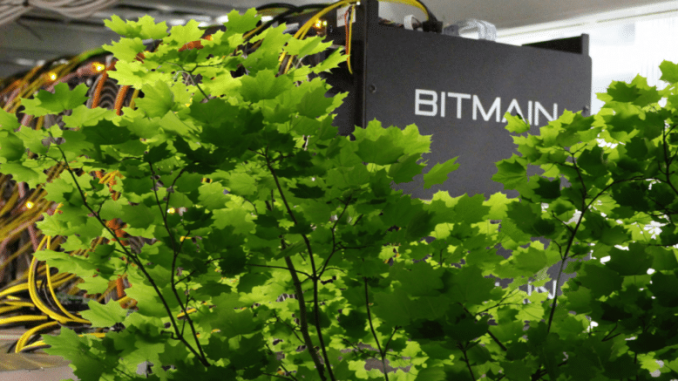
Crypto miners are going to extraordinary lengths to bring down the costs of cryptocurrency mining, as hashrates reach historic highs and prices struggle to move beyond market resistance.
The situation has forced out less efficient miners, with the sector now being dominated by big players with millions of dollars to invest in low-cost, dedicated energy sources. They are also ready to splurge on highly efficient mining hardware.
Cryptocurrency Mining Figures
Cryptocurrency mining uses up colossal amounts of energy, and according to the Bitcoin Energy Consumption Index tracker, annual energy used in mining bitcoin alone stands at about 53.7 terawatt hours per year. This is more than enough electricity to power a nation such as the Republic of Ireland. Correlated CO2 emissions are currently placed at about 20 megatonnes.
This is because of the Proof-of-Work mechanism that underlies cryptocurrencies, which is very energy intensive. To put this into perspective, a single bitcoin transaction consumes as much power as 4,000 credit card transactions. Significant power is not only required to run powerful mining devices, but also air-conditioning to cool the hardware, which tends to heat up fast when running at maximum capacity.
In current market conditions, almost all bitcoin mining revenues are used to pay off electricity costs. Digiconomist puts the figure at roughly 67 percent, which is a significant portion, while Credit Suisse’ estimation is higher, at around 80 percent.
According to a recent Credit Suisse briefing, a bitcoin price uptick could only lead to greater resources being dedicated to mining, pushing up hashrates and increasing mining-difficulty. Going by the company’s estimations, power consumption on the bitcoin network will have increased tenfold at the $50,000 price point.
A Race for Green Power
To keep energy costs on the low, more crypto mining enterprises are embracing renewable energy. DPW Holdings’ most recent venture is a great example of this new shift.
The firm recently announced the reactivation of the historic Valatie Falls hydroelectric dam in New York, which is set to be operated by its Super Crypto Mining subsidiary. The facility, which was built in 1983 and purchased by DPW Holdings in March, is scheduled to begin operations towards the end of the year.
The company plans on using the dam to power its mining farm, which will utilize AntEater miners, developed in collaboration with Samsung Semiconductors. According to the company statement, the move will ensure a sustainable and economically viable mining model.
Smaller companies such as Golden Fleece, a cryptocurrency mining startup, have also jumped on the bandwagon. The company has reportedly set up base in Georgia to take advantage of low-cost renewable energy generated from water flowing down the Caucasus Mountains.
Migration To Countries With Renewable Energy
The pursuit of crypto fortunes has led more small-scale miners to hunker down in countries with low power rates, mainly attributed to the extensive harnessing of renewable energy. Sweden and Norway, for example, have become a favorite among miners for their abundance of hydroelectric power and low temperatures.
Iceland is also a preferred mining zone among enthusiasts. The country generates over 90 percent of its energy from hydroelectric and geothermal sources. Its cool Arctic air also solves server-room, air-conditioning problems, subsequently bringing down operational costs.
This article by author Elizabeth Gail was originally posted on Coincentral. Republished with permission.

